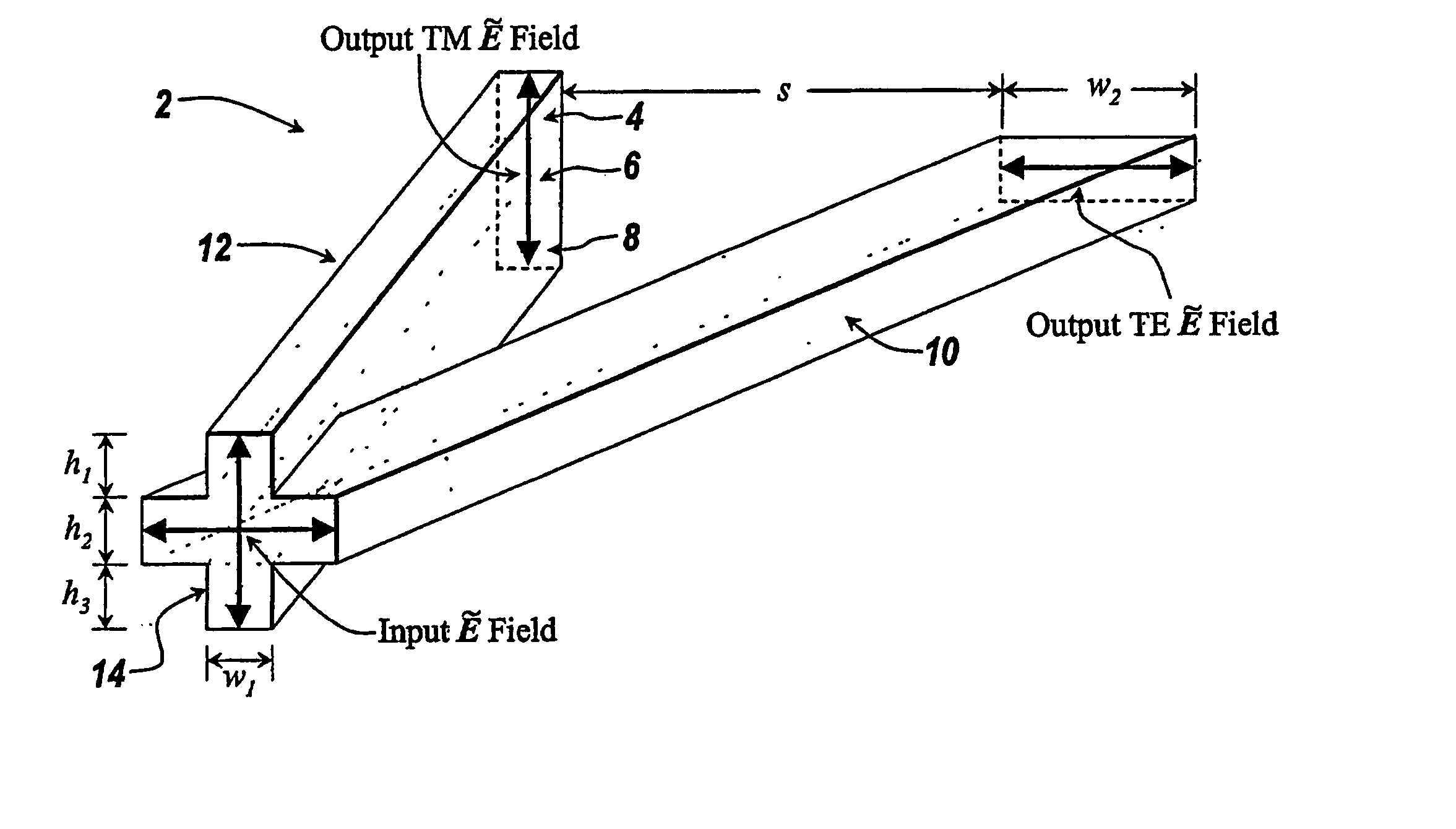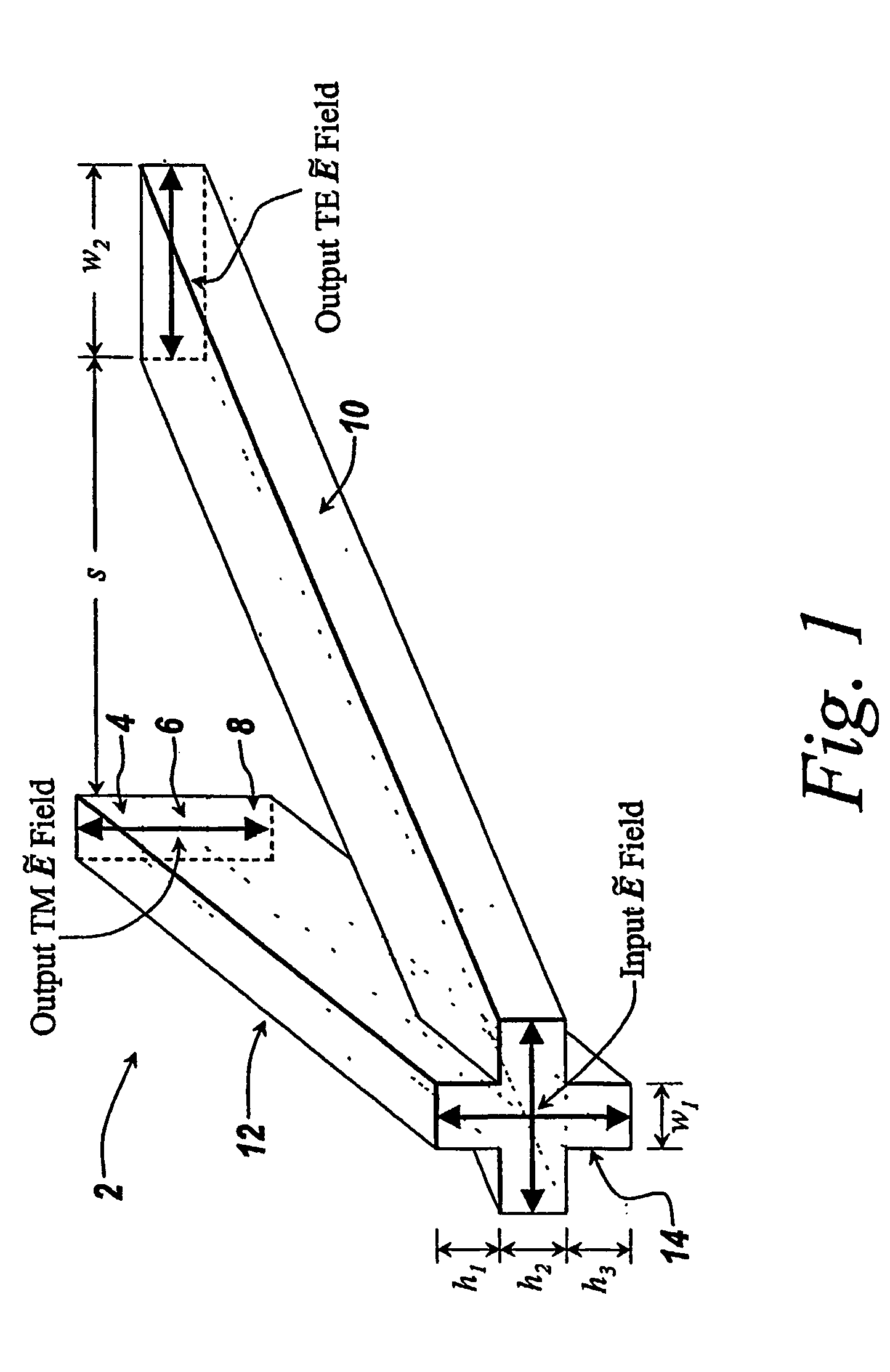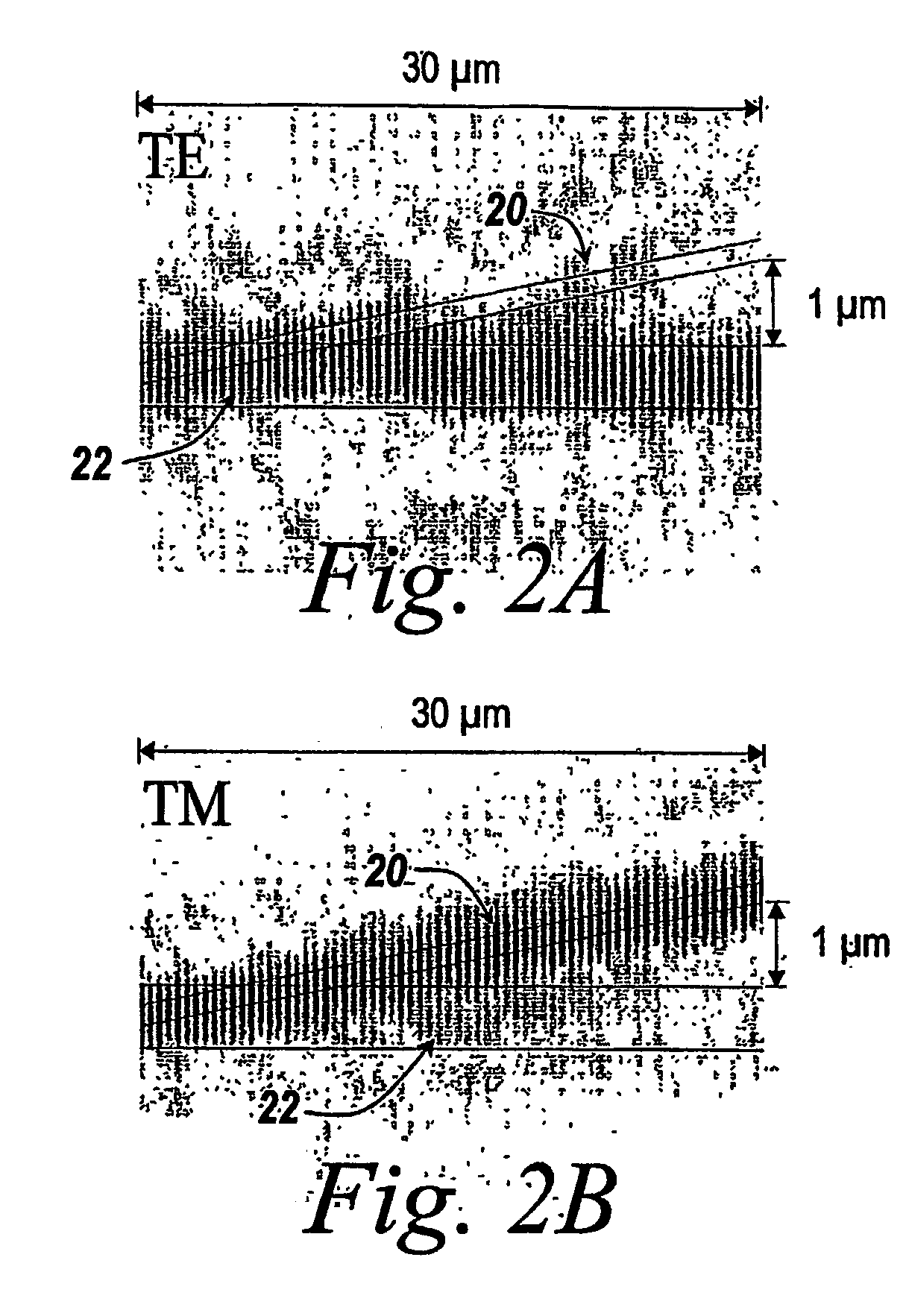Wavelength insensitive integrated optic polarization splitter
a splitter and wavelength-sensitive technology, applied in the direction of optical waveguide light guide, optical fibre with multi-layer core/cladding, instruments, etc., can solve the problems of polarization dependent performance, cumbersome implementation of bulk optics, and difficult if not impossible to compensate both simultaneously
- Summary
- Abstract
- Description
- Claims
- Application Information
AI Technical Summary
Benefits of technology
Problems solved by technology
Method used
Image
Examples
Embodiment Construction
[0024] The polarization splitter of the invention is constructed from the intersection or near intersection of a pair of waveguides. The zone in which the waveguides are in closest proximity is the splitter input and the zone in which they are at their greatest separation is the splitter output. For the device to efficiently separate the polarization states, the fundamental TE (or quasi TE) mode of the combined structure at the device input must evolve into the fundamental mode of one of the guides, denoted the TE guide, while the fundamental TM (or quasi TM) mode evolves into the fundamental mode of the other guide, denoted the TM guide. For this to occur, the TM mode of the TM guide must be more strongly guided (have a higher effective index) than the TM mode of the TE guide. Similarly, the TE mode of the TE guide must be more strongly guided than the TE mode of the TM guide.
[0025] The evolution of the waveguide acts as a perturbation to the mode structure inducing coupling among...
PUM
 Login to View More
Login to View More Abstract
Description
Claims
Application Information
 Login to View More
Login to View More - R&D
- Intellectual Property
- Life Sciences
- Materials
- Tech Scout
- Unparalleled Data Quality
- Higher Quality Content
- 60% Fewer Hallucinations
Browse by: Latest US Patents, China's latest patents, Technical Efficacy Thesaurus, Application Domain, Technology Topic, Popular Technical Reports.
© 2025 PatSnap. All rights reserved.Legal|Privacy policy|Modern Slavery Act Transparency Statement|Sitemap|About US| Contact US: help@patsnap.com



